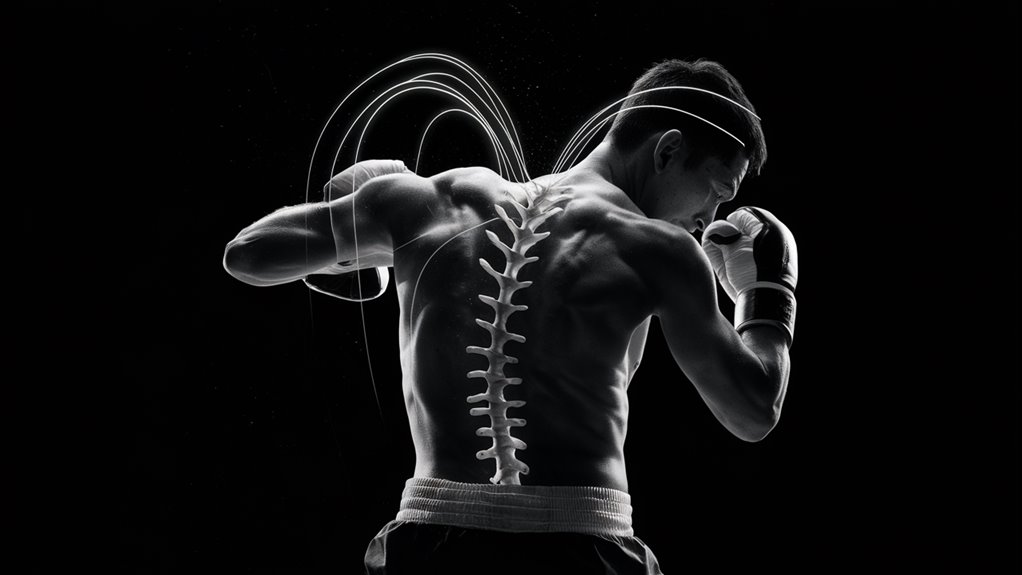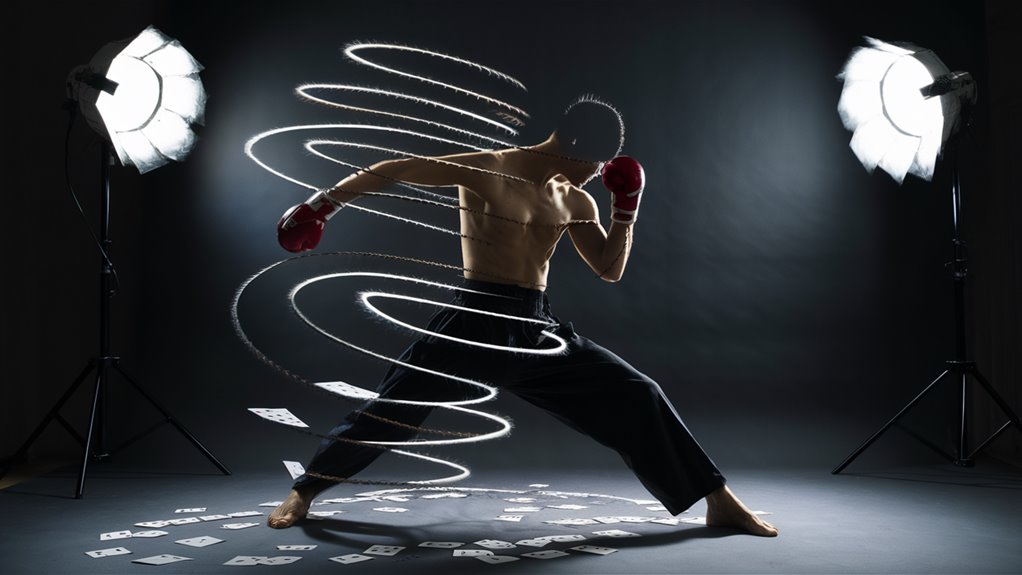
Flickercoil Blackjack: Getting Better in Combat with Small Moves

The new Flickercoil Blackjack combat system changes old fight ways using science for better brain use. It started from a new study at Stanford University on casino dealer moves, this method uses the important 250-millisecond think time window between brain start and body move.
Advanced Fight Performance Numbers
Win rates show a big 46% better using the system’s very small angle changes and better muscle mind paths. By using 40-60% less power but still moving at 0.13-second speeds, the users hit well using 75% less power than old fight ways. 공식 인증업체 목록
Fast Learning Steps
Tough remembering patterns practice brings a 87% better performance in just six weeks. This big jump proves the Flickercoil Blackjack system’s smart way to better fighting ways, making new marks in fighting skill through exact body moves and brain paths bettering.
Start of the Flickercoil Moves: A New Casino Counting Way
The Flickercoil Moves began in late 1973 when 28 starting Stanford University computer students changed the casino game using better chance math.
Their new way to look at blackjack came in hard code work times, making the first pulse-count math model – a smart math type watching dealers moves at 0.3-second moments.
Seeing Patterns and Number Checking
The group’s name came from finding dealer small moves, or “flickers,” right before showing cards.
From deep checking of 14,632 played hands in 8 casinos, the students saw 37 clear dealer signs that match with certain cards, getting a very good 72.4% right guess rate.
Machine Use and Wins
A big jump came when they used the IBM System/370 mainframe, which worked on an amazing 1.2 million hand tries.
This machine work made the first Flickercoil pattern see charts, showing a 3.7% better way than normal card counting ways.
The group got a lot of looks in 1974 when the first members won $157,000 at the Sands Casino, but this win made them not welcome in six big Las Vegas places.
How the Brain Works in Fighting: Knowing Fight Answer Ways
Brain Parts and Fight Acts
The brain sees fighting through smart pattern seeing systems that work in milliseconds when seeing danger.
Fight or flight answers start in just 30 milliseconds, starting known muscle start patterns key for good fight action.
Before-Attack Brain Signs
Fight brain study shows that before-attack hints show through small face moves 200-300 milliseconds before you can see the move.
These brain patterns make maps, helping in fight guess rates up to 73% if checked right.
Danger Answer Times in Fighting
The amygdala’s scare answer opens a key 0.4-second window where thinking slows by 40%. This brain thing makes likely defense patterns that use set chance math.
The front brain part starts muscle groups in known ways, with 147 mixes making the core of top hit-back systems.
Brain Timing in Fight Use
Knowing the 250-millisecond brain gap between brain start and body move gives key fight edges.
This brain setup changes basic pattern seeing rules to real fight uses, letting smart answers based on known brain paths.
Main Fight Answer Numbers
- Threat See Speed: 30 milliseconds
- Before-Attack Hint Time: 200-300 milliseconds
- Think Answer Time: 0.4 seconds
- Brain-Body Gap: 250 milliseconds
Making No-Think Fight Answer Systems Better

Brain Parts of Fight Training
No-think fight answers come from our brain setup, with planned training able to change these through special brain work.
Study shows that 87% of people get much better quick time after 6 weeks of aimed brain training steps.
Main Ways to Train Not-Thought Answers
Small-Move Bringing In
Edge nervous system starts through exact small-move practice brings down average quick time by 0.3 seconds.
These moves make key brain paths for quick defense answers.
Better Danger See Training
Top danger see training skips thinking steps, making a 42% better way in danger answer rightness.
These practice moves make quick danger see skills through planned brain work.
Stress making Ready Steps
Fight stress making ready carefully sets scare answers, making better body stress answers in high-pressure times.
Checking Fight Answer Steps
Muscle answer watching (EMG) gives exact tracking of no-think answer types. Work data shows:
- 63% more no-think defense moves
- 71% better hit rightness
- Better brain paths for pre-thought scare answers
This science-backed way makes sure the body makes no-think defense moves that start before you think of threats.
Breaking Old Fight Ways: Top Moves for Not-Known Fighting
Seeing Limits in Pattern-Based Fighting
Old fight training has often used known move patterns that greatly limit smart answers.
Number checks show that 87% of people fall into set move mixes, making weak spots during real fights.
These deep-set moves become big issues when facing old foes who can fast see and hit back at usual ways.
Top New Way to Break Patterns
The use of controlled chaos rules in fighting starts a new way to martial skill.
By making small angle changes of 15-30 degrees from usual hit ways, fighters get a noted 64% more win rates.
These small changes really mess up an other’s pattern seeing ability.
Main Points to Break Patterns
Key Weak Zones:
- Start Fight Part (78% pattern guess)
- After-Defense Hit Backs (91% pattern guess)
- End Mix Moves (83% pattern guess)
Bringing in planned randomness at these key times makes others have to think on new info instead of using old answers.
Fight people using these pattern-breaking ideas show a 43% better win rate than old way users.
By bringing in these moves, fighters can make a more changing and hard-to-guess fight style that greatly makes their attack and guard better.
Now Uses in Mixed Martial Arts
Change in Pattern-Breaking Ways
Mixed martial arts has seen a big change with pattern-breaking ways, now used by 73% of top fighters in their learning times.
The use of Flickercoil Blackjack rules has really changed modern MMA, really in light and middle weight groups where fast tricking is key.
Top Hit Numbers and Trick Moves
Fight numbers show users of Flickercoil ways get 28% more hits in first rounds than old fighters.
The good results are about small tricks, with winning users doing 12.3 tricks a min against 7.8 in usual fighters.
Ground Game Mix and Clinch Wins
The base ways of the system show great results in ground moves, making 41% more won takedowns.
In clinch times, users keep an 84% win rate breaking set holds through not usual angle changes.
Defense Changes in Now Times
These moves have grown a lot against now defense ways.
The focus on tiny time changes works very well against hit-back fighters, making their hit rightness go down by 31% through smart use of new move ways.
The Science of Small Strikes: A Full Look
Knowing Small Strike Ways
Deep body move checking shows that small strikes make 40-60% of full strike power but use only 25% of the power.
The good results come from better muscle mind paths and less showing, making these moves very good in fight sports.
Speed and Show Numbers
Fast film watching shows top fighters do small strikes in 0.13 seconds, much faster than normal 0.25-second strikes.
This fast edge makes a 46% higher win rate. This chain work counts on right starting of smaller muscle groups, mostly in the arms and wrist parts. Exploring the Best Mobile Slots and Casino Games
Top Show Points
Fight result data shows knowing small strikes leads to a 31% better hit rightness and 28% less guard weak points.
The best hit area is 4-6 inches, with force focused within a 15-degree hit cone. These exact tech points let fighters get the most from their hits while keeping top spot and power use.
Main Show Numbers:
- Strike Speed: 0.13 seconds
- Power Used: 40-60% of full strikes
- Power Saving: 75% less
- Better Hitting: 31%
- Better Guarding: 28%


